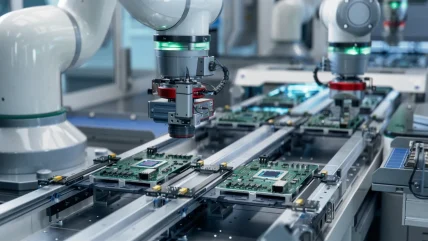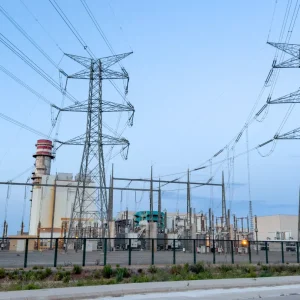
The global semiconductor industry recorded revenue of $626bn in 2024, reflecting an 18.1% increase from the previous year, according to preliminary data from Gartner. Market projections indicate further growth, with revenue expected to reach $705bn in the current year.
Demand for AI processors and graphics processing units (GPUs) for data centres contributed significantly to the sector’s expansion. Gartner found that data centres became the second-largest market for semiconductors after smartphones, with semiconductor revenue in this sector nearly doubling to $112bn in 2024, up from $64.8bn in 2023. “The rising demand for AI and generative AI (GenAI) workloads led data centres to become the second-largest market for semiconductors in 2024, behind smartphones,” said Gartner’s VP Analyst George Brocklehurst.
This strong market performance led to shifts in semiconductor industry rankings. Samsung Electronics regained its position as the world’s largest semiconductor vendor, overtaking Intel. The South Korean company’s 2024 revenue reached $66.5bn, driven by higher memory device prices. Intel, which fell to the second position, recorded semiconductor revenue growth of just 0.1%, as its AI PC and Core Ultra chipset sales were not enough to offset challenges in AI accelerator adoption and limited x86 business expansion.
Nvidia advanced to No. 3, recording $46bn in revenue, an 84% increase from 2023, as its AI GPUs and accelerator cards saw strong adoption in data centres.
According to Gartner, 11 vendors among the top 25 reported double-digit revenue growth, while eight saw revenue declines in 2024. SK hynix ranked fourth with $42.8bn, an 86% increase from 2023, while Qualcomm held the fifth position with $32.4bn, reflecting 10.7% growth. Micron Technology climbed to sixth place with $27.8bn, up 72.7%, while Broadcom ranked seventh at $27.6bn, growing 7.9%. AMD recorded $23.9bn in revenue, Apple posted $18.9bn, and Infineon Technologies rounded out the top ten with $16bn, experiencing a 6% decline in revenue.
The memory market saw a significant rebound, posting 71.8% revenue growth in 2024. The segment accounted for 25.2% of total semiconductor sales, with DRAM revenue increasing 75.4% and NAND revenue rising 75.7% year-over-year. High-bandwidth memory (HBM) contributed 13.6% of total DRAM revenue in 2024. Non-memory semiconductor revenue grew by 6.9%, contributing 74.8% of total industry revenue.
“Memory and AI semiconductors will drive near-term growth, with HBM projected to account for an increasing share of DRAM revenue, reaching 19.2% in 2025,” said Brocklehurst. “HBM revenue is estimated to increase 66.3% in 2025, reaching $19.8bn.”
Global semiconductor industry poised for growth in 2025, led by AI
The semiconductor industry is set for strong growth in 2025, with AI emerging as the top revenue driver, according to a separate survey by KPMG and Global Semiconductor Alliance. The KPMG Semiconductor Industry Confidence Index rose to 59, reflecting increased optimism. 92% of executives expect revenue growth, driven by AI, cloud computing, wireless, and automotive applications.
Confidence varied by company size, with small firms (score: 68) more optimistic than mid-sized (54) and large companies (58). Geopolitical risks continue to impact supply chains, prompting regional production investments. According to the survey, talent shortages in AI chip design and semiconductor fabrication remain a key concern. Another key finding is that chip inventory levels are stabilising after surpluses in 2023, supporting healthy market conditions.






